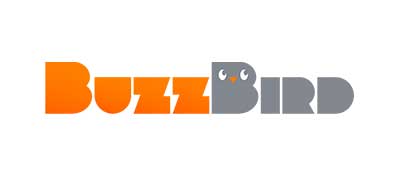
The use of chatbots within AI-based technology: an audit performed by Nordakademie Graduate School Hamburg and BOLD
The number of searches including the word ‘chatbot’ has grown exponentially in Germany since 2014 and has increased tenfold since 2021. This topic is continually becoming more important and holds a high level of importance within the transition towards industry and consulting 5.0. Together with students at Nordakademie Graduate School Hamburg in the fields of business psychology, financial management & accounting, general management and marketing & sales management, we researched the diverse fields of use for chatbots in BOLD’s consulting process. Our goal was to evaluate how a chatbot can be designed to be simpler and more efficient, with the support of additional AI processes. In collaboration with the students, we explored differing perspectives and collected data so we can get as broad a picture as possible on the issue of chatbots. We started our research by analysing the status quo for the usage of chatbots in 2021. This audit helped us to understand the bots’ place within AI-based technology. By defining the term, we ensured we could make comparisons with other theoretical and empirical results. A clear linguistic consensus on the understanding of the entity being defined enabled our research to be transparent on an academic level. Understanding how chatbots are developed was a crucial concern, as was researching their technical foundation.
Our research enabled us to identify and name the various genres of chatbots. Differentiating between them helped us and the students to work out potential usage areas for chatbots within consulting 5.0.
Virtual assistance by communicating with smart robots
Human reservations towards machine-based dialogue systems
Chatbots as technology for customer acquisition and retention, driven by added value
Chatbots are increasingly developing into virtual assistants and trustworthy consultants in the fields of industry, marketing and consulting 5.0, so it’s scarcely surprising that companies have recognised the value added by dialogue-driven technology. These AI-based systems for language, messaging or text communication are used as a tool for direct interaction with and for users on the website of many large companies. Users see the requisite dialogue window where they can input their questions. The answers don’t come from a human in a call centre or help desk: they are supplied by a virtual communications robot. Chatbots can be integrated into the messaging services of social platforms via APIs, technical programming interfaces between various applications. In turn, this enables users’ favourite channels to be deployed, thereby creating a holistic customer experience. Chatbot applications can answer questions autonomously and undertake tasks with zero human input.
They can be used in all kinds of ways. Process automation saves time and money, with the use of chatbots also reducing the error rate. It becomes easier to provide high-quality dialogue in customer service, with it being possible to optimise this in the long term, thanks to machine learning. However, employees in the service centre can also benefit from the digitalisation offered by chatbots that are proactively able to improve customer support: employees’ workload is reduced as they have more time to handle complex matters that require human communication. Be it a consultation on a product or a service, a bot can handle all these enquiries in a fully automated way. In turn, this makes human consultations even more valuable. The support offered by chatbots and the data they collect can lead to a much more comprehensive consulting concept.
Hybrid communication within consulting 5.0
While the fourth industrial revolution focused on full automation without human input, industry 5.0 and, in turn, consulting 5.0 is all about the interaction between people and machines. This interplay between people and artificial intelligence is termed ‘hybrid customer communication’. Within a customer support system, as many enquiries as possible need to be answered in a short period of time, without the quality of these answers suffering in the process. High-quality, precise responses are ensured by coordinating artificial intelligence with people. The AI scans the content, categorises it, extracts the necessary data and can turn to a programmed system for standard enquiries. For recurring tasks, in particular, automation can lighten the workload for employees doing manual activities. But support isn’t the only field where using chatbots is a smart choice. A company’s sales and marketing departments can also derive benefit from a chatbot. By drawing on historical user behaviour, it is even possible for personal messages to be launched in real time with efficient targeting, for instance. The number of leads, conversions and engagement on a website can be boosted in a measurable, scalable way, thanks to chatbots that enhance the general level of customer satisfaction and the user experience. Media companies turn to communications robots to share their content with readers via WhatsApp or Facebook Messenger, thereby gaining new readers in the long term. Consumer goods brands boost their brand by using chatbots to support their corporate identity and put their advertising figures in direct dialogue with potential and existing customers.
The ways in which they can be deployed are as varied as the people and companies themselves that are already making use of these technical dialogue systems based on artificial intelligence. Progress has far from reached its conclusion in this field: there is lots of scope for customer-centric consulting. In our next step, we delved deeper into the topic of chatbots and researched how the bot can obtain an external perspective using various volumes of data. In collaboration with students at Nordakademie Graduate School, we researched viable interfaces in consulting and investigated how the interaction between a bot and employees and managers can impact the internal mood at a company in correlation to its brand(s).







